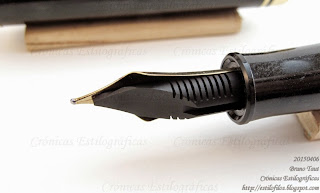The answer to that question depends heavily on the market where you were located. In Japan, for instance, the Sailor KoP is in general cheaper than the Custom Urushi, but that is not the case in many other markets.
However, I wonder whether those two pens belonged to the same category. Sure they both implement large nibs, but the urushi layer of the Pilot sets it apart and adds some refinement the Sailor lacks both in the plastic and ebonite models. The urushi, in other words, might be enough to justify the higher price of the Custom Urushi in the Japanese market. And, consequently, an even more expensive KoP would necessarily be at loss with respect to the Pilot.
More apt to comparison, in my opinion, are the Sailor King Profit made of ebonite and the Eboya Hakobune XL. Both pens are made of ebonite without any additional coating, both sport size 8 nibs, both are full sized. And both cost around JPY 75000.
Their differences are also clear. The KoP has a plastic section –the same section valid for all KoP models. The Eboya, conversely, is completely made of ebonite.
The weakest element of the Eboya might be the nib—a German-made Bock clearly labeled as such. In exchange, the feed is made of ebonite, which is something that many aficionados appreciate.
The problem the buyer might have is the limited distribution of these two models. Sailor seems focused on mode expensive versions of the KoP series of pens, and finding the King Profit in ebonite is very difficult lately. On its side, Eboya's Hakobune XL is not in the regular catalog of the company, and its availability depends on the supply of the Bock 380 system.
Conspicuously absent in this discussion is Platinum. And that because Platinum does not make any nib of a similar size. Platinum's strategy for luxury pens seem based on the decoration and not on the nib.
 Platinum Izumo and Nakaya Cigar. Platinum's sense of luxury is associated to the decoration rather than to the nib.
Platinum Izumo and Nakaya Cigar. Platinum's sense of luxury is associated to the decoration rather than to the nib.
And now, the decision of what to buy is up to everyone of us.
Arenton silver rings – Unknown blue-black ink
Bruno Taut
Nakano, May 13th 2021
etiquetas: Pilot, Platinum, Eboya, Bock, Sailor, plumín, mercado
Bruno Taut
Nakano, May 13th 2021
etiquetas: Pilot, Platinum, Eboya, Bock, Sailor, plumín, mercado





























































